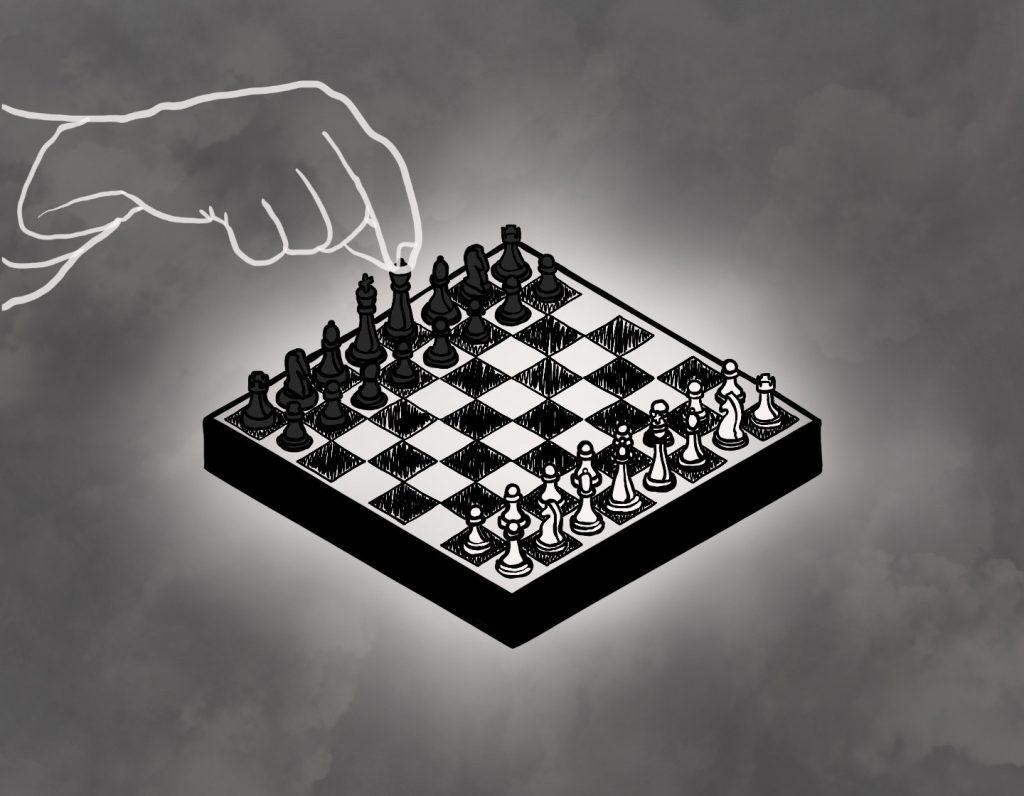
Transparency Item: The Perspectives section of the Graphic is comprised of articles based on opinion. This is the opinion and perspective of the writer.
When I took Religion 101, I thought I would do very well on the final exam, but I did not. This mismatch of expectations shook my framework of confidence in my knowledge of religion and obliterated my effort in studying and reviewing.
This leftme in a state of chaos. Before taking my exam, I had confidence in my psychological schema; afterward, I was left with nothing but the resounding words in my head, “You were wrong.”
Confronting limits hurts psychologically and physically. We enter into an abyss when we realize we have overshot our limits and have to slowly re-develop or adjust our schemas to match reality. Nobody likes such sudden and catastrophic change.
Social standards like exam grades, fitness tests and social expectations impose limits. Oftentimes, society deems these standards too harsh and abolishes them, reducing the psychological pain of failing to meet these social standards.
But would abolishing all social standards remove the pain of not living up to them? Should society terminate the limiting standards so no one ever fails?
By removing social standards, society can ensure people never have to endure the horrible pain of change. For example, society could remove test scores and lower fitness expectations to reduce the psychological suffering students have to go through.
Many college boards removed the standardized test requirement in 2020 during the COVID-19 outbreak, according to Inside Higher Ed. Organizations such as The National Education Association considered the psychological suffering these standardized tests cause excessive in such a non-standard time.
This approach can be taken to all the social standards that society imposes. However, limits can alsobe seen in another way: asrules.
Rules are a positive way of looking at our limitations. These rules form the framework in which our creativity can adapt and adjust. For example, the sheer amount of rules is nearly unending in chess, with little niches and obscure traditions that seem to make no sense. Yet, it is only through this multiplicity of rules that the game can be played.
A key insight into the metaphor of a game is that games are a form of creative limitation I voluntarily choose. When I decide to play a game, I willingly obey obscure and strange rules. When I make the pivotal shift of seeing life’s limits as rules of a game, I affirm my existence. Limits become the rules I accept to play the game of life.
Think of limits positively from the perspective of a game; how do these limits enable me to be creative and adjust? What do they call out within me to change or adapt?
Limits set the stage for experimentation and creativity. One can only paradoxically change the rules if one has them to begin with. When I have pushed up to my physical and mental limits, how can I adapt to this problem? Limits are part of the creative process of life. Embrace limits as a creative element.
Regardless of how much humanity tries to run, it is always left with one limit — death. Death is the ultimate limit that births all creativity because our time here is limited. Our actions matter, and one can either choose to take a positive or negative view. Either the limit of death makes the game of life possible, or death hangs as an overwhelming specter, paralyzing life in endless anxiety.
Why not embrace the limits and think of them as the rules of a chessboard? Only through these multiplicities of limits can I be so creative. Limits are the contours of the river of life. They define me and birth creativity.
Limits will always be with you, whether you like them or not. Instead of lamenting limits, start to see them as rules of a game you choose to play.
______________________________
Follow the Graphic on Twitter: @PeppGraphic
Contact Arik Chu via email: arik.chu@pepperdine.edu or by Instagram @arik_chu

